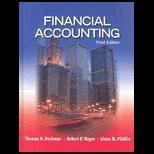Answered step by step
Verified Expert Solution
Question
1 Approved Answer
Q5) (15 pts)Let d is defined as the number of bit positions in which the two bits are different, denoted by d(S1; 52). For example,
Q5) (15 pts)Let d is defined as the number of bit positions in which the two bits are different, denoted by d(S1; 52). For example, for the following strings of length 6: s= 101010; t = 111000 then d(s; t) = 2; Consider the set of all binary strings of length n. On this set, we define a relation R as follows: R = {(s, t) E RId(s, t) 1} Is R an equivalence relation?

Step by Step Solution
There are 3 Steps involved in it
Step: 1

Get Instant Access to Expert-Tailored Solutions
See step-by-step solutions with expert insights and AI powered tools for academic success
Step: 2

Step: 3

Ace Your Homework with AI
Get the answers you need in no time with our AI-driven, step-by-step assistance
Get Started


